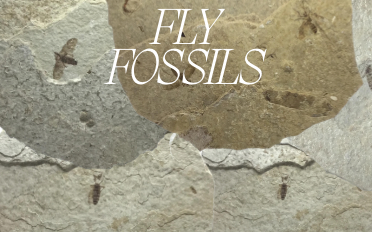Fly Fossils | Fossil Information, Properties All Entries

Insects, including flies, can be preserved as fossils through a process called fossilization. This process occurs when insects become trapped in materials such as amber, sediment, or volcanic ash. Over time, these materials harden into rock or form amber, preserving the delicate structures of the insects. Fossilized flies can provide valuable information about ancient ecosystems, insect evolution, and environmental conditions at the time of their preservation.
In general, fossils are often associated with grounding, connecting to the past, and fostering a sense of connection with the natural world.
Physically, fossilized flies can vary in size, depending on the species and preservation conditions. They may be preserved as complete specimens or partial remains. The preservation can range from detailed impressions of the insect's body to more fragmented and less well-preserved specimens. Fossilized flies, like other insect fossils, can provide valuable scientific insights into the morphology, behavior, and evolutionary history of these creatures.
The study of fossilized insects is an essential part of paleontology and contributes to our understanding of the history of life on Earth. Fossils, including insect fossils, are significant scientific resources that allow us to explore the ancient world and gain insights into the intricate web of life that has evolved over millions of years.
Do not use crystal healing in place of your medicine/healthcare.